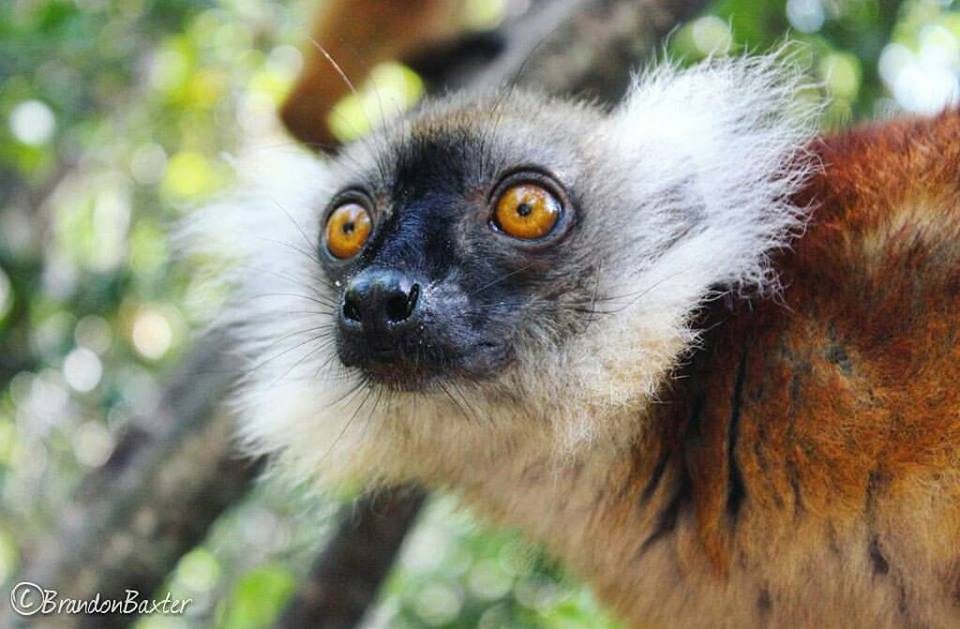Illegal Trade Poses a Major Threat to Lemurs in Madagascar
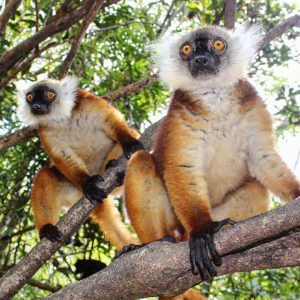 As of 2011, the wildlife trade was responsible for the movement of tens of thousands of live primates and millions of dead primates (including lemurs) per year as reported by CITES. A linear increase in the export of primates was documented between 1996 and 2011, and is expected to have increased substantially within the past 5 years. These figures are not representative of the true number of specimens traded, due to under-reporting and the illegal wildlife trade.
As of 2011, the wildlife trade was responsible for the movement of tens of thousands of live primates and millions of dead primates (including lemurs) per year as reported by CITES. A linear increase in the export of primates was documented between 1996 and 2011, and is expected to have increased substantially within the past 5 years. These figures are not representative of the true number of specimens traded, due to under-reporting and the illegal wildlife trade.
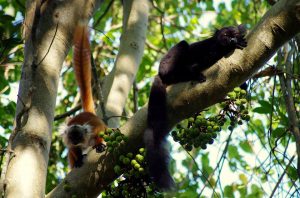 The illegal wildlife trade poses a major threat to the conservation of many primate species, and is considered a ‘leading threat’ similar to that of hunting and habitat destruction for particularly vulnerable species. Primate species such as lemurs are commonly traded for meat, use in traditional medicine, and as pets.
The illegal wildlife trade poses a major threat to the conservation of many primate species, and is considered a ‘leading threat’ similar to that of hunting and habitat destruction for particularly vulnerable species. Primate species such as lemurs are commonly traded for meat, use in traditional medicine, and as pets.
 Lemur meat is consumed irregularly by Malagasy locals and is a problem which needs to be tackled in more the urbanised areas of Madagascar. The illegal trade of lemurs as pets is a problem which has surfaced within the past year, and has major implications on the conservation of lemur species throughout Madagascar (Reuter et al., 2016). In Madagascar, almost one third of all lemur species are kept as illegal pets, with the most popular being ring-tailed, common brown, and crowned lemurs.
Lemur meat is consumed irregularly by Malagasy locals and is a problem which needs to be tackled in more the urbanised areas of Madagascar. The illegal trade of lemurs as pets is a problem which has surfaced within the past year, and has major implications on the conservation of lemur species throughout Madagascar (Reuter et al., 2016). In Madagascar, almost one third of all lemur species are kept as illegal pets, with the most popular being ring-tailed, common brown, and crowned lemurs.
 Between 2010 and mid-2013 it is estimated that over 28,000 lemurs were removed from the wild and taken into captivity as pets. Of the 101 lemur species residing within Madagascar, 14 have fewer than 10,000 individuals remaining in the wild and an astonishing 90 species are classified as threatened by the IUCN, with fewer than 1,000 wild individuals.
Between 2010 and mid-2013 it is estimated that over 28,000 lemurs were removed from the wild and taken into captivity as pets. Of the 101 lemur species residing within Madagascar, 14 have fewer than 10,000 individuals remaining in the wild and an astonishing 90 species are classified as threatened by the IUCN, with fewer than 1,000 wild individuals.
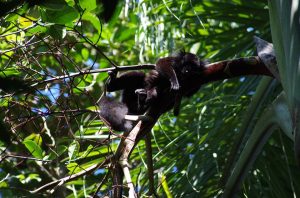 From both a conservation and animal welfare perspective, the illegal trade of lemurs is catastrophic. The removal of such a vast number of individuals from the wild resultssmaller populations with lower survivability. Impaired functional ability (the ability to forage, defend themselves from predators and other troops of lemurs, and care for juveniles) of lemur troops, combined with a loss of genetic diversity and juvenile survival leads to the decline of wild populations.
From both a conservation and animal welfare perspective, the illegal trade of lemurs is catastrophic. The removal of such a vast number of individuals from the wild resultssmaller populations with lower survivability. Impaired functional ability (the ability to forage, defend themselves from predators and other troops of lemurs, and care for juveniles) of lemur troops, combined with a loss of genetic diversity and juvenile survival leads to the decline of wild populations.
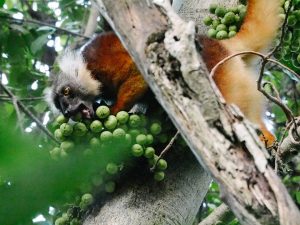 Pet lemurs experience a myriad of psychological and physical problems as a result of their capture. The inability to express natural behaviours such as socialisation and foraging, along with an inadequate diet and unnatural environment, commonly leads to stress and the development of harmful stereotypical behaviours. Health problems such as obesity and diabetes are common. Many cases have also been documented of lemurs being kept in inhumane conditions, such as in small cages and on tight leashes.
Pet lemurs experience a myriad of psychological and physical problems as a result of their capture. The inability to express natural behaviours such as socialisation and foraging, along with an inadequate diet and unnatural environment, commonly leads to stress and the development of harmful stereotypical behaviours. Health problems such as obesity and diabetes are common. Many cases have also been documented of lemurs being kept in inhumane conditions, such as in small cages and on tight leashes.
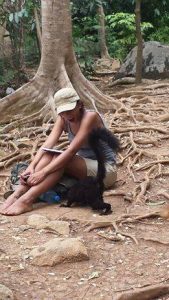 The lead author of the first comprehensive study focusing on pet lemurs in Madagascar has called for “more outreach, regulation, and enforcement to curb” this previously unknown and extensive black market trade of lemurs (Reuter et al., 2016). This refers not only to locals in more urbanised parts of the country, but establishments within the tourism sector, such as resorts, which use lemurs as an attraction.
The lead author of the first comprehensive study focusing on pet lemurs in Madagascar has called for “more outreach, regulation, and enforcement to curb” this previously unknown and extensive black market trade of lemurs (Reuter et al., 2016). This refers not only to locals in more urbanised parts of the country, but establishments within the tourism sector, such as resorts, which use lemurs as an attraction.
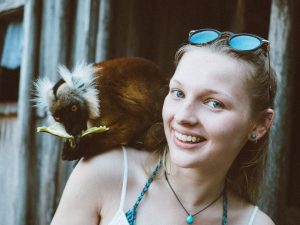 MRCI is committed to the conservation of lemurs in the wild. We are currently undertaking behavioural studies on two types of lemur troops: one which is considered truly wild, and one which has become habituated to humans via tourist presence and interaction. We aim to glean information on the impact of human interaction on wild lemur populations and use this to educate the local community on lemur conservation, as well as inform policy on a local and national scale.
MRCI is committed to the conservation of lemurs in the wild. We are currently undertaking behavioural studies on two types of lemur troops: one which is considered truly wild, and one which has become habituated to humans via tourist presence and interaction. We aim to glean information on the impact of human interaction on wild lemur populations and use this to educate the local community on lemur conservation, as well as inform policy on a local and national scale.
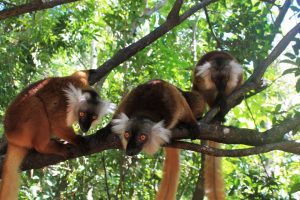 The lemur studies conducted by MRCI staff and volunteers aim to determine the differences in habituated and non-habituated troops in terms of behavioural, population, and spatial dynamics. Comparing population and spatial dynamics involves looking at average troop size, the ratio of adults to juveniles and males to females, spatial occurrence, and territorial range. Behavioural comparisons focus on feeding/foraging, communication, socialisation, human interaction, territorial behaviours, and activity levels of individual lemurs and troops as a whole. Within a single troop, behavioural differences related to gender and age are studied.
The lemur studies conducted by MRCI staff and volunteers aim to determine the differences in habituated and non-habituated troops in terms of behavioural, population, and spatial dynamics. Comparing population and spatial dynamics involves looking at average troop size, the ratio of adults to juveniles and males to females, spatial occurrence, and territorial range. Behavioural comparisons focus on feeding/foraging, communication, socialisation, human interaction, territorial behaviours, and activity levels of individual lemurs and troops as a whole. Within a single troop, behavioural differences related to gender and age are studied.
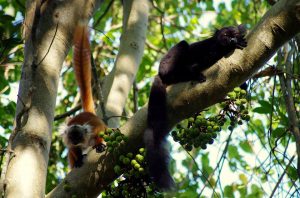 Preliminary findings of MRCI’s data indicate the habituated lemur troop interact with humans to a much greater extent, whereas wild troops attempt to avoid human interaction. It is common for wild lemurs to purposefully urinate and defecate on researchers during surveys. Wild lemurs appear to spend more time foraging. The habituated lemur group are regularly fed by tourists, indicating less of a pressure to forage for sustenance. More data collected over a longer period of time will be necessary in order to determine significant differences between the habituated and wild lemur troops.
Preliminary findings of MRCI’s data indicate the habituated lemur troop interact with humans to a much greater extent, whereas wild troops attempt to avoid human interaction. It is common for wild lemurs to purposefully urinate and defecate on researchers during surveys. Wild lemurs appear to spend more time foraging. The habituated lemur group are regularly fed by tourists, indicating less of a pressure to forage for sustenance. More data collected over a longer period of time will be necessary in order to determine significant differences between the habituated and wild lemur troops.
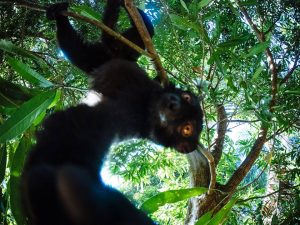 In the village of Ampangarino on Nosy Komba, the habituated lemur troop provides a valuable source of income for several of the local people. The Lemur Park, constructed on the border of the village and forest, acts as a tourist attraction that provides visitors with the opportunity to interact with the Ampangarino wild lemur troop. Local tour guides benefit directly from Lemur Park visitors, but the park itself is also valuable for development of the whole community. Local shops, restaurants, market stalls, and boat companies receive more business due to a higher influx of tourists, the profit of which is utilised to improve the quality of life for entire families. The whole community is invested in the maintenance and improvement of the Lemur Park with men, women, children and even MRCI volunteers helping with construction to ensure its continued presence.
In the village of Ampangarino on Nosy Komba, the habituated lemur troop provides a valuable source of income for several of the local people. The Lemur Park, constructed on the border of the village and forest, acts as a tourist attraction that provides visitors with the opportunity to interact with the Ampangarino wild lemur troop. Local tour guides benefit directly from Lemur Park visitors, but the park itself is also valuable for development of the whole community. Local shops, restaurants, market stalls, and boat companies receive more business due to a higher influx of tourists, the profit of which is utilised to improve the quality of life for entire families. The whole community is invested in the maintenance and improvement of the Lemur Park with men, women, children and even MRCI volunteers helping with construction to ensure its continued presence.
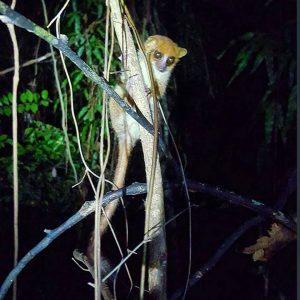 The Lemur Park not only plays an important role in local community development, but also conservation awareness and education. For many, seeing a charismatic animal in the flesh incites a desire to learn about and protect them. Social awareness is a key factor in the conservation of any species. For a geographically isolated species such as the black lemur, raising awareness through visiting tourists is extremely important. The altered attitudes of the tourists who visit the lemur park, and the sharing of this knowledge and attitude with others when they return home, is vital to drive real social change regarding lemur conservation.
The Lemur Park not only plays an important role in local community development, but also conservation awareness and education. For many, seeing a charismatic animal in the flesh incites a desire to learn about and protect them. Social awareness is a key factor in the conservation of any species. For a geographically isolated species such as the black lemur, raising awareness through visiting tourists is extremely important. The altered attitudes of the tourists who visit the lemur park, and the sharing of this knowledge and attitude with others when they return home, is vital to drive real social change regarding lemur conservation.



